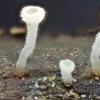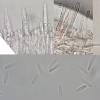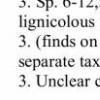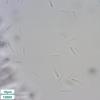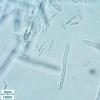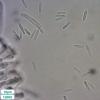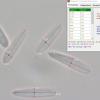
21-12-2025 21:32
Pol DebaenstHello, Garden, Burgweg 19, Veurne, BelgiumOn 10/1

21-12-2025 21:40
Isabelle CharissouBonjour, j'aimerais connaitre les références de

21-12-2025 21:31
Pol DebaenstHello, Garden, Burgweg 19, Veurne, BelgiumOn 10/1

21-12-2025 21:31
Pol DebaenstHello, Garden, Burgweg 19, Veurne, BelgiumOn 10/1

20-12-2025 23:08
Patrice TANCHAUDBonsoir, récolte sur sol sablonneux dans l'arri�

21-12-2025 09:32
Hello.A tiny ascomycete found embedded in wood in

20-12-2025 15:47
Mirek GrycHi.These grew on pine wood that was heavily covere
(6.7) 8.2 - 10.4 (11.4) × (2.0) 2.05 - 2.6 (2.8) µm
Q = (3.2) 3.6 - 4.5 (4.7) ; N = 37
Me = 9.2 × 2.3 µm ; Qe = 4.0
The paraphyses are 50-65 x 4.7-6, with one or two bigger and some smaller droplets, protruding some 15-25 µm.
With these features I end up in subkey 4 of Zotto's key and there step 3 with three lignicolous species and an "unclear collection from Filipendula". This one was most probably growing on Filipendula ulmaria on a wet and swampy lake shore.
I compared to an L. pudibundum i found some weeks ago (on Prunus padus) and the main difference seems to be that the hairs are not capitate (with the exception of one hair) and the paraphyses are marginally more protruding. Is a host switch to Filipendula possible for L. pudibundum?





